Mercedes G Class vs Mitsubishi ASX – Differences & prices compared
Both models have their strengths – but which one suits you more?
Compare performance, efficiency, price and space directly: Mercedes G Class or Mitsubishi ASX?
Costs and Efficiency: Looking at overall running costs, both models reveal some interesting differences in everyday economy.
Mitsubishi ASX has a convincingly advantage in terms of price – it starts at 20600 £, while the Mercedes G Class costs 106600 £. That’s a price difference of around 86028 £.
Fuel consumption also shows a difference: Mitsubishi ASX manages with 4.40 L and is therefore convincingly more efficient than the Mercedes G Class with 8.70 L. The difference is about 4.30 L per 100 km.
Engine and Performance: Under the bonnet, it becomes clear which model is tuned for sportiness and which one takes the lead when you hit the accelerator.
When it comes to engine power, the Mercedes G Class has a convincingly edge – offering 605 HP compared to 158 HP. That’s roughly 447 HP more horsepower.
In acceleration from 0 to 100 km/h, the Mercedes G Class is decisively quicker – completing the sprint in 4.40 s, while the Mitsubishi ASX takes 8.50 s. That’s about 4.10 s faster.
In terms of top speed, the Mercedes G Class performs to a small extent better – reaching 220 km/h, while the Mitsubishi ASX tops out at 180 km/h. The difference is around 40 km/h.
There’s also a difference in torque: Mercedes G Class pulls decisively stronger with 1164 Nm compared to 270 Nm. That’s about 894 Nm difference.
Space and Everyday Use: Beyond pure performance, interior space and usability matter most in daily life. This is where you see which car is more practical and versatile.
Both vehicles offer seating for 5 people.
In curb weight, Mitsubishi ASX is convincingly lighter – 1296 kg compared to 2485 kg. The difference is around 1189 kg.
In terms of boot space, the Mercedes G Class offers noticeable more room – 640 L compared to 484 L. That’s a difference of about 156 L.
In maximum load capacity, the Mercedes G Class performs clearly perceptible better – up to 2010 L, which is about 414 L more than the Mitsubishi ASX.
When it comes to payload, Mercedes G Class evident takes the win – 715 kg compared to 449 kg. That’s a difference of about 266 kg.
Who comes out on top?
Overall, the Mitsubishi ASX shows itself to be has the upper hand and secures the title of DriveDuel Champion.
It convinces with the more balanced overall package and proves to be the more versatile choice for everyday use.

Mitsubishi ASX
Mercedes G Class
The Mercedes-Benz G-Class stands as a symbol of rugged luxury, combining robust off-road capabilities with sophisticated design. Its iconic boxy shape and imposing presence are complemented by a lavish interior that offers a blend of comfort and cutting-edge technology. Despite its longstanding heritage, the G-Class continues to evolve, maintaining its status as a premier choice for those seeking both adventure and opulence.
details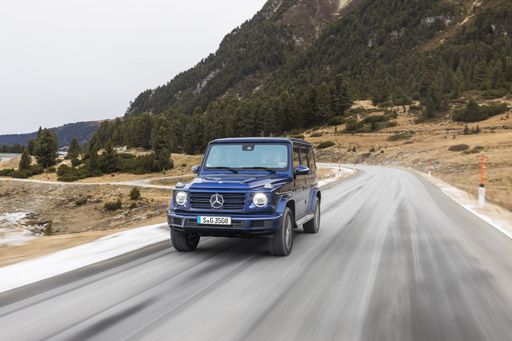 @ group-media.mercedes-benz.com
@ group-media.mercedes-benz.com
 @ group-media.mercedes-benz.com
@ group-media.mercedes-benz.com
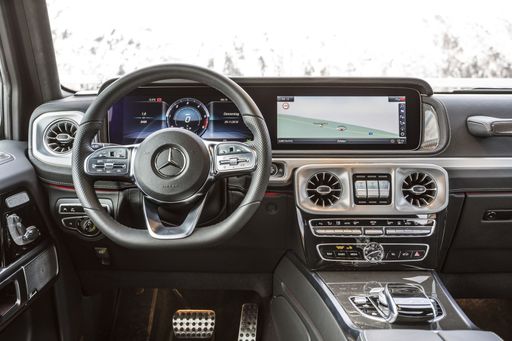 @ group-media.mercedes-benz.com
@ group-media.mercedes-benz.com
Mitsubishi ASX
The Mitsubishi ASX presents itself as a compact crossover that combines practicality with style. Its sleek design and versatile interior make it an appealing choice for both urban and rural settings. With a focus on providing a comfortable driving experience, the ASX also offers a range of modern features that enhance connectivity and safety.
details @ Mitsubishi
@ Mitsubishi
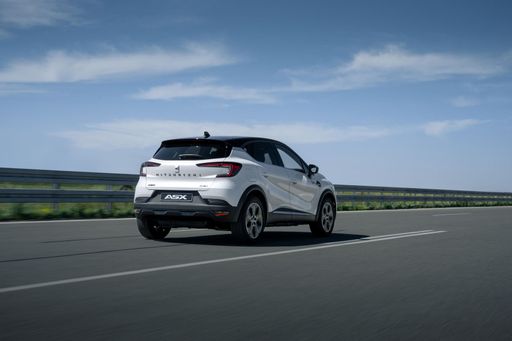 @ Mitsubishi
@ Mitsubishi
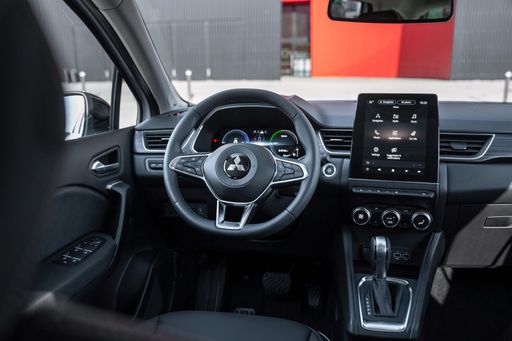 @ Mitsubishi
@ Mitsubishi
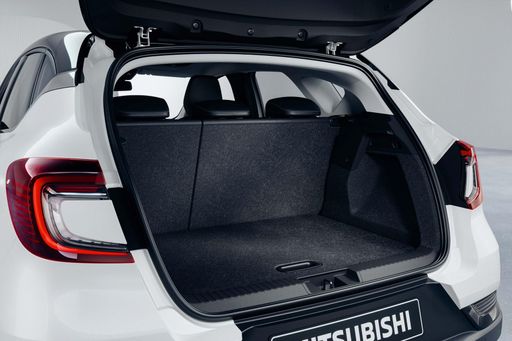 @ Mitsubishi
@ Mitsubishi

|

|
|
|
|
Costs and Consumption |
|
|---|---|
|
Price
106600 - 171000 £
|
Price
20600 - 32500 £
|
|
Consumption L/100km
8.7 - 14.7 L
|
Consumption L/100km
4.4 - 6 L
|
|
Consumption kWh/100km
28 kWh
|
Consumption kWh/100km
-
|
|
Electric Range
468 km
|
Electric Range
-
|
|
Battery Capacity
116 kWh
|
Battery Capacity
-
|
|
co2
0 - 336 g/km
|
co2
99 - 135 g/km
|
|
Fuel tank capacity
100 L
|
Fuel tank capacity
48 L
|
Dimensions and Body |
|
|---|---|
|
Body Type
Off-Roader
|
Body Type
SUV
|
|
Seats
5
|
Seats
5
|
|
Doors
5
|
Doors
5
|
|
Curb weight
2485 - 3085 kg
|
Curb weight
1296 - 1493 kg
|
|
Trunk capacity
620 - 640 L
|
Trunk capacity
348 - 484 L
|
|
Length
4624 - 4873 mm
|
Length
4239 mm
|
|
Width
1931 - 1984 mm
|
Width
1797 mm
|
|
Height
1973 - 1983 mm
|
Height
1575 mm
|
|
Max trunk capacity
1990 - 2010 L
|
Max trunk capacity
1458 - 1596 L
|
|
Payload
415 - 715 kg
|
Payload
397 - 449 kg
|
Engine and Performance |
|
|---|---|
|
Engine Type
Electric, Petrol MHEV, Diesel MHEV
|
Engine Type
Petrol, Petrol MHEV, Full Hybrid
|
|
Transmission
Automatic
|
Transmission
Manuel, Automatic
|
|
Transmission Detail
Reduction Gearbox, Automatic Gearbox
|
Transmission Detail
Manual Gearbox, Dual-Clutch Automatic, Automatic Gearbox
|
|
Drive Type
All-Wheel Drive
|
Drive Type
Front-Wheel Drive
|
|
Power HP
387 - 605 HP
|
Power HP
91 - 158 HP
|
|
Acceleration 0-100km/h
4.4 - 5.8 s
|
Acceleration 0-100km/h
8.5 - 14 s
|
|
Max Speed
180 - 220 km/h
|
Max Speed
168 - 180 km/h
|
|
Torque
760 - 1164 Nm
|
Torque
160 - 270 Nm
|
|
Number of Cylinders
6 - 8
|
Number of Cylinders
3 - 4
|
|
Power kW
285 - 445 kW
|
Power kW
67 - 116 kW
|
|
Engine capacity
2989 - 3982 cm3
|
Engine capacity
999 - 1789 cm3
|
General |
|
|---|---|
|
Model Year
2024 - 2025
|
Model Year
2024 - 2025
|
|
CO2 Efficiency Class
A, G
|
CO2 Efficiency Class
D, C
|
|
Brand
Mercedes-Benz
|
Brand
Mitsubishi
|
What drive types are available for the Mercedes G Class?
Available configurations include All-Wheel Drive.
The prices and data displayed are estimates based on German list prices and may vary by country. This information is not legally binding.
